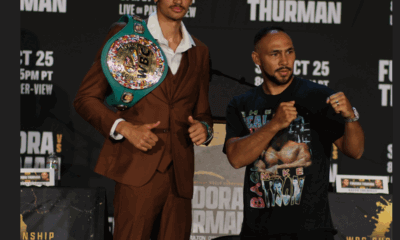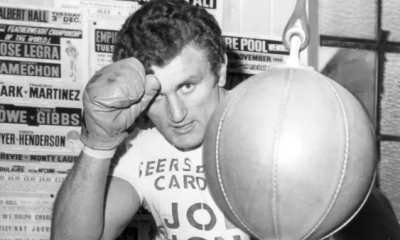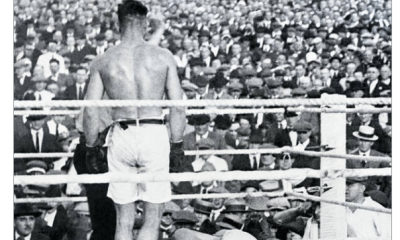Featured Articles
Ailing Marv Marinovich Should Have Realized He Had a Son, Not a Science Project
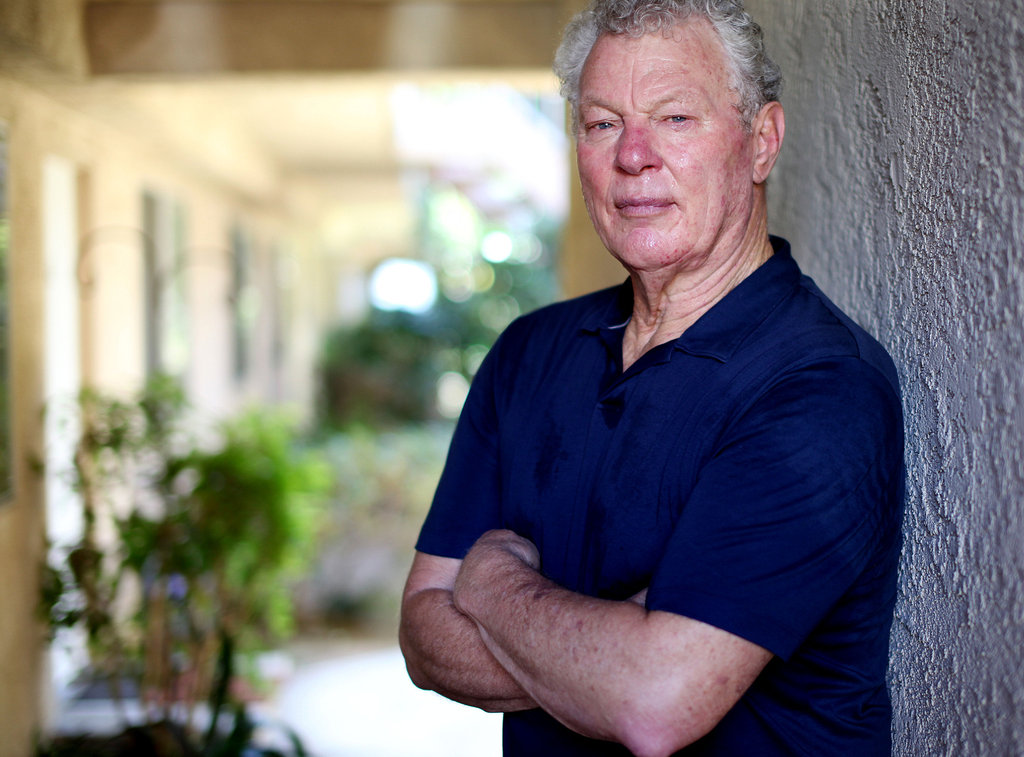
The father, now 79, has a memory being wiped slowly clean by the ravages of Alzheimer’s disease, so perhaps he remains oblivious to the horrific damage done to his family by his selfish if perhaps well-intentioned plan for creating an athletically flawless son. Then again, human history should have alerted Marv Marinovich to the folly of conducting scientific experimentation in flesh and blood, an exercise in self-aggrandizement periodically repeated by tyrants and madmen who thought it was all right for them to attempt to play God. The difference is that slaveholders intent on breeding their fittest specimens like cattle, and Hitler’s blueprint for creating a master race through a form of mass murder known as ethnic cleansing, did not involve the ongoing infliction of abuse and paralyzing pressure upon someone the obsessed experimenter purported to love more than anyone or anything.
Maybe Marv Marinovich really has loved his son, Todd, now 49, whom the father was always intent, even before his wife’s pregnancy, on making not just into a quarterback, but one crafted over time to someday represent perfection at the position. But it was not simply for Todd Marinovich’s own sake that so much time, effort and money was poured into an ultimately failed project; the companion goal all along was for Marv to be recognized and hailed as the genius he imagined himself to be.
The sad, tragic saga of the Marinoviches has been examined at length at various stages, through alternating moments of giddy highs and plunging lows. But the full extent of what went wrong has been laid bare in the current issue of Sports Illustrated, in a lengthy article authored by Michael Rosenberg. Entitled Learning to be Human, it is a follow-up to a similar SI story, Bred to be a Superstar, that appeared in the magazine’s Feb. 22, 1998, issue. Twenty years ago some particulars of Todd’s slide from grace, a downward spiral that saw him go from a first-round draft choice of the then-Los Angeles Raiders in 1991 (he was selected ahead of some guy named Brett Favre) and even deeper into drug addiction, were mentioned, but so too were elements of the big lie that still persisted at that time. If Todd had not capitalized as much as he might have on the advantages afforded him by his tunnel-visioned and deep-pocketed father, then at least some of the blame had to be his own fault, right?
Genetically well-suited for the kind of success plotted by Marv (more on that later), and relentlessly poked and prodded by the 14 specialists employed by the father, including biochemists and psychologists, to help squeeze out every ounce of the kid’s performance potential, Todd eventually was done in by a more gentle side of his nature. An introvert, he liked football well enough, but he found a more satisfying way of expressing himself through his fine art studies at USC. Then again, Marv hadn’t set out to create an improved version of Picasso or Monet, and try as he might no amount of parental bullying was going to instill into the son the same competitive fire that was forever raging inside Daddy Dearest’s internal blast furnace. It therefore should not have come as a shock to the psychologists on Team Todd that the young man nicknamed “Robo QB” began self-medicating himself in high school with all manner of pharmaceutical substances, eventually graduating from marijuana to cocaine, LSD and heroin while at USC.
As recently as eight years ago, an emotionally wrecked Todd still was delusional enough to parrot the key element of the big lie, that he had been a willing and even eager participant in a joint venture with his control-freak father that hadn’t really been foisted upon him since birth. “Someday people will realize what a genius you are,” Esquire quoted him as telling Marv.
But now those segments of the big lie that haven’t already been exposed as false are being revealed for what they were. The oft-repeated mantra that Todd had never consumed any unhealthy fast foods, carbonated beverages or desserts with refined sugar? The kid greedily gorged on Big Macs and Oreos slipped to him on the sly by his maternal grandparents, who wanted the boy to enjoy some small semblance of a “normal” childhood denied him by the son-in-law they also had come to fear. The whopper of a mendacity that Marv, under the guise of raising his only son with a brand of tough love that never crossed the line into brutality? The reality was that Marv smacked Todd around as if he were a sparring partner who was never allowed to strike back or even brook dissent. All it took to initiate a beating was for Marv to determine that Todd had not performed perfectly in that particular day’s practice or game, and he never did, at least not to his demanding father’s satisfaction.
As the father of two children that he fears he never will be able to raise as well as he knows he should, given that his own life is a perpetual morass of personal weaknesses and jagged scars upon his psyche, Todd at least has come to terms with the realization that continuing to repeat the big lie does no one any good. He now describes his father as a “raging beast” whose dictums he was powerless to reject or resist.
Only some of the facts of the Marinoviches’ tortured relationship were available to me when I interviewed Marv, who then was training MMA superstar BJ Penn, in advance of Penn’s main-event bout against Kenny Florian for UFC 101 on Aug. 8, 2009, the first such event to be held in the Wachovia (now Wells Fargo) Center in Philadelphia. Penn – who forced Florian to tap out on a rear-naked choke hold in the third round – was effusive in his praise of Marv’s somewhat unorthodox techniques.
“Everything happens the way it should. If I had won my last fight (a fourth-round stoppage loss to Georges St. Pierre in UFC 94 on Jan. 31, 2009), I probably wouldn’t have wound up with Marv,” Penn said. “But being that I did lose, I started thinking about going in another direction. I was frustrated; some people were beginning to question my desire.
“Then some buddies of mine introduced me to Marv, and it’s like losing my last fight was a blessing in disguise. I’ve always trained hard, but I trained like everyone else trained. Marv has opened my eyes to a different way, a better way.”
The Marv I interviewed then – by phone, as he had not traveled to Philadelphia with Penn – did not come across as a raging beast. Then again, Penn was merely his client, not the son whom he was doggedly determined to make over into his own image.
“BJ had some definite physical weaknesses,” Marv pointed out. “If you compete with weak links, you have to compensate and maybe even overcompensate for those problem areas. It can lead to injuries and stamina issues. Without question it can and does affect overall efficiency.
“They say athletic training in the past was prehistoric. I think it’s still prehistoric. Coaches in all sports – basketball, football, baseball, whatever – still believe the ability to lift heavy weights slowly is going to make you explosive and fast and increase limb speed. Nothing can be further from the truth. That’s why you don’t see boxers do traditional weightlifting. All that does is slow down the rate of muscular contraction. Bench-pressing, squatting and dead-lifting not only puts your body out of balance, it destroys limb speed. If you want to jump high and run fast, lifting heavy weights is not the answer. But people over here (in America) still think that it does. You’ve got strength-and-conditioning coaches all over the country who cling to the old methods.”
The training methods espoused by Marv Marinovich leaned heavily toward those devised by his counterparts in Soviet Bloc countries, which is hardly surprising. His over-the-top obsessive-compulsive personality might owe in large part to genetic makeup; his Croatian grandfather, J.G. Marinovich, is said to have been in the Russian Army and overseen the battlefield amputation of his own arm. Marv thus was raised to believe that he was from a line that was tougher than tough, so therefore his mission in life was to perpetuate the family tradition of absolute dedication to whichever task its members sought to undertake. And for Marv, the path to the higher purpose that defined his existence was on a football field. He was a starting guard on the USC Trojans’ undefeated national championship squad in 1962, a relentlessly driven and vocal leader so intense that his teammates voted him “most inspirational.”
It hardly mattered to Marv that his own NFL career with the Oakland Raiders lasted only three disappointing seasons and was marked by frequent injuries stemming from overtraining. He simply would funnel all the hopes and ambitions he once reserved for himself into the son he knew would be special, having specifically selected a USC swimmer, Trudi Fertig, as his bride not only because of her athletic makeup but because she was the sister of his Trojans teammate, quarterback Craig Fertig. How could Marv’s yet-unborn son be anything but great with all that going for him, and especially with the expert technical assistance Marv planned to introduce into the child’s upbringing?
“It’s very sick,” Marv’s other child, a daughter, Traci, whom he shamefully neglected while solely focusing on Todd, said of a dysfunctional family dynamic that saw the father’s volcanic temper erupt with disconcerting regularity. It was one thing for Marv to lash out at strangers with balled fists, quite another when he took out his frustrations on Todd and Trudi, whom he once picked up and threw across a room onto a dining room table. The couple divorced in 1985.
So immersed in the notion of athletic dominance within his family circle was Marv that, when Traci got married in 1988, he refused to give her away and almost skipped the ceremony. His objection: Traci’s fiancé, Rick Grove, was not athletic enough. Marv even refused to shake his new son-in-law’s hand, or to be there for the births of the three children that Traci bore.
Imitation being the most common form of flattery, you have to wonder what might have been the result had an undamaged Todd blossomed into the superstar quarterback he was supposed to become instead of the drug-addled head case that now stands as a cautionary tale to all fathers who might otherwise be inclined to follow the Marv Marinovich playbook in the raising of their children. Even as Todd was refining his footwork and arm-angle release of his passes under the watchful eye of the experts brought in by Marv, the Robo QB was emotionally coming apart at the seams, an inevitable dissolution which must have been apparent to everyone but his father. Todd played only eight unspectacular games over two seasons with the Raiders prior to his release, and in 2004 the editors of ESPN.com placed him fourth on their list of all-time sports flops. One ESPN columnist absolved Todd of at least some of the blame, chastising Marv, with ample justification, as one of the worst sports dads ever.
While the road to ruin trod by the Marinoviches – forget football stardom, Todd may never become a fully functional human being and the Alzheimer’s-stricken Marv no longer can bathe himself without assistance or control his bodily functions – represents something of a worst-case scenario, theirs is a story that was, is and again will be played out by others, more than a few of whom have ties to boxing. It is a fine line that separates necessary commitment to the achieving of a goal and borderline insanity, and examples of those who tight-rope walk along that border are legion.
The pitched battles between International Boxing Hall of Famer Wilfred Benitez and his trainer-father, Gregorio, are the stuff of legend and caused Teddy Brenner, the late, great matchmaker at Madison Square Garden, to weigh in on a topic of eternal interest. Just who does or should run the show once a son, so used to acquiescing to his father’s unyielding discipline, decides he must live his own life?
“I’ve noticed it since (Wilfred) won the title and people began to pat him on the back and he realized he was an individual,” Brenner said. “Rebellion sets in. It happens all the time in the boxing business between father and son. Never fails.”
Former heavyweight contender Gerry Cooney, now 62, had an ironworker father, Tony, whose implementation of parental authority was nearly as stern as Marv Marinovich’s, minus the bloated crew of technical advisers. Author Charles Euchner, in an article entitled The Rise, Fall and Redemption of Gerry Cooney, examined the conflict faced daily by young Gerry, a gregarious sort who long sought the love of his dad, who either chose not to acknowledge his son’s needs or didn’t know how to.
“Sons with troubled relationships with fathers struggle to develop their own identity,” Euhner wrote. “They desperately want attention and approval, but they also want separation and independence. When they get too far away, they veer back toward their dads, no matter how much pain they get for the effort.”
Said Cooney, of his subsequent battles with depression, alcoholism and drugs, twisted relationships and squandered possibilities: “(Tony) would belt me with his hands, his belt. How do you do that to your kids? He drank and was very physical. He kept us under control. He kept us (Gerry is one of Tony’s eight kids, including three brothers) separated. We all had different hiding places. Mine was in the basement.”
It is a terrible thing when a bond that should have been based in love takes on the trappings of hatred, even if the end result is not always totally negative. Rosalio Pacquiao, father of Manny, took his son’s dog away from him, cooked it and ate it in front of him, inciting a traumatized Manny years later to run away on a ship headed to Manila where he turned to boxing; Fernando Vargas and James Toney so detested their absentee fathers that they imagined every opponent to be the man who had abandoned them, further fueling their desire to inflict beatdowns; and Shane Mosley, Roy Jones Jr. and Floyd Mayweather Jr. all fired their trainer-dads.
Nor is Marv Marinovich’s smothering obsession a detrimental trait exclusive to fathers who were absent the day patience, understanding and compassion were handed out. Masha Godkin, now a psychologist specializing in counseling performers, remembers what it was like to be constantly dragged to auditions by a stage mother who wanted to live out her dreams through a daughter who simply wanted a regular childhood.
“I felt if I didn’t get roles, I wasn’t good enough,” Godkin said. “Everything revolved around pleasing my mother. She wanted to be an actress. She assumed I did, too.”
Few if any magazine articles about sports are as significant as the one about the Marinoviches. After all, what is the most important job any man can have? President of the United States? Well, maybe. But with the possible exception of confirmed bachelors with playboy tendencies, for most males it is the linked responsibilities of being a husband and father. As the former for 50 years, and the father of four children (two sons and two daughters), I know I have not fulfilled those duties as well as I might have, but I hope to God I have met at least an acceptable standard in each instance. Both my sons are around Todd Marinovich’s age. I count myself fortunate that they sought and found their own path, and not one I attempted to force upon them.
Bernard Fernandez is the retired boxing writer for the Philadelphia Daily News. He is a five-term former president of the Boxing Writers Association of America, an inductee into the Pennsylvania, New Jersey and Atlantic City Boxing Halls of Fame and the recipient of the Nat Fleischer Award for Excellence in Boxing Journalism and the Barney Nagler Award for Long and Meritorious Service to Boxing.
Check out more boxing news on video at The Boxing Channel
To comment on this article in The Fight Forum, CLICK HERE
-

 Book Review4 weeks ago
Book Review4 weeks agoMark Kriegel’s New Book About Mike Tyson is a Must-Read
-

 Featured Articles2 weeks ago
Featured Articles2 weeks agoThe Hauser Report: Debunking Two Myths and Other Notes
-
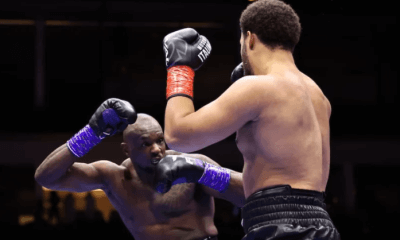
 Featured Articles3 weeks ago
Featured Articles3 weeks agoMoses Itauma Continues his Rapid Rise; Steamrolls Dillian Whyte in Riyadh
-

 Featured Articles3 weeks ago
Featured Articles3 weeks agoNikita Tszyu and Australia’s Short-Lived Boxing Renaissance
-
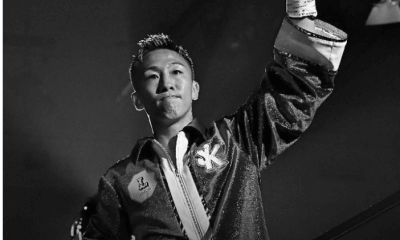
 Featured Articles4 weeks ago
Featured Articles4 weeks agoKotari and Urakawa – Two Fatalities on the Same Card in Japan: Boxing’s Darkest Day
-
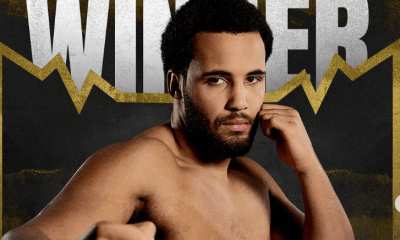
 Featured Articles3 weeks ago
Featured Articles3 weeks agoIs Moses Itauma the Next Mike Tyson?
-
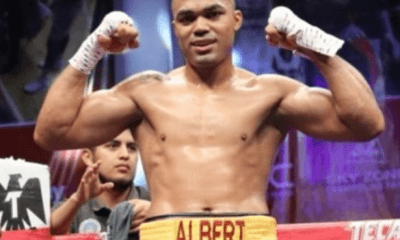
 Featured Articles4 weeks ago
Featured Articles4 weeks agoRamirez and Cuello Score KOs in Libya; Fonseca Upsets Oumiha
-
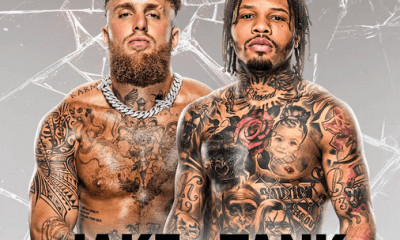
 Featured Articles2 weeks ago
Featured Articles2 weeks agoBoxing Odds and Ends: Paul vs ‘Tank,’ Big Trouble for Marselles Brown and More


